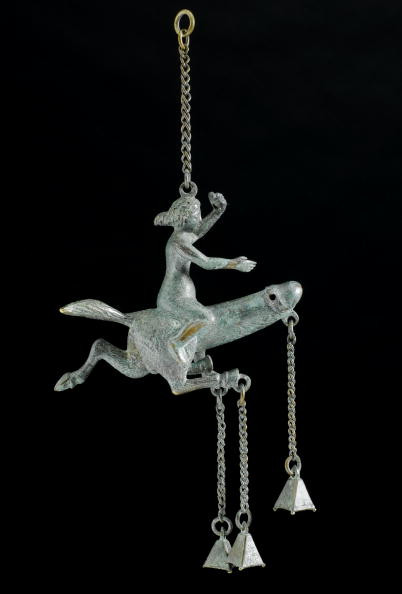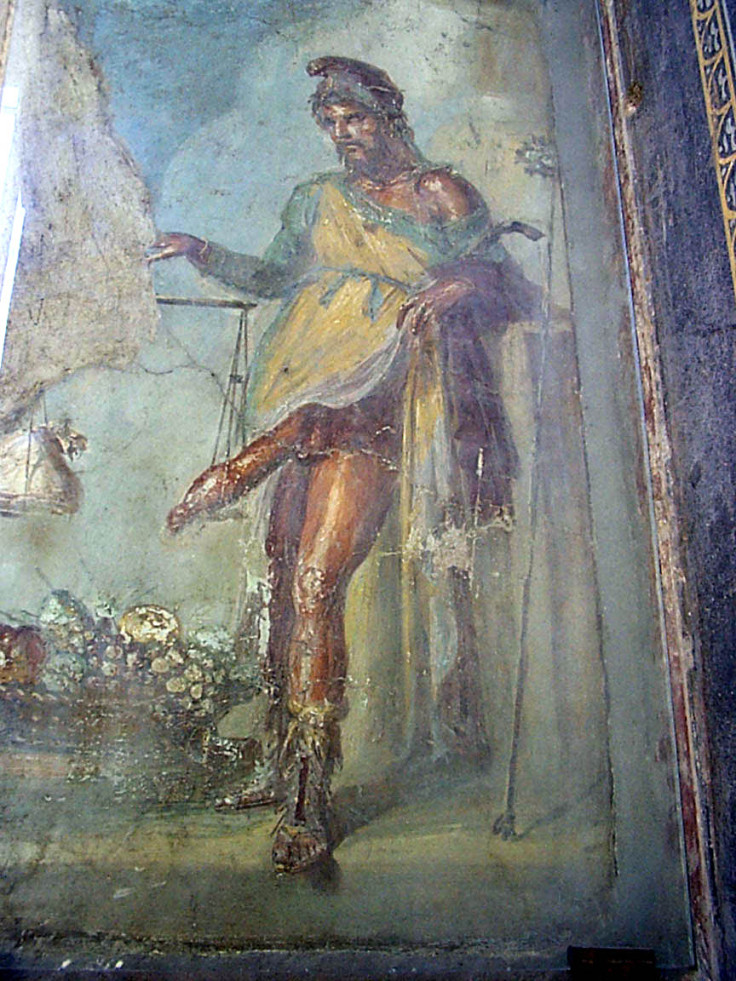Magic penis amulets protected ancient Romans from the evil eye
Phallic imagery is omnipresent in Roman art and could have been a good-luck charm.
At the heart of Hula valley in northern Israel lies the archaeological site of Omrit, where a large Roman temple complex is being excavated.
Archaeologists have recently unearthed the remains of a 1,900 year old house in the vicinity of the temple, with elaborate frescoes showing scenes of nature. But the house also concealed a number of unexpected objects – including ancient amulets in the shape of a phallus.
These strange artefacts, and the purpose they served, may be difficult to grasp today. What's clear is that sex was prominent part of Roman art, belief systems and humour. Paintings, statues and everyday objects depicting sexual organs and erotic scenes were not confined to the private sphere, they were on display both in public and domestic realm.
Many striking examples have been found in Pompeii. Archaeologists who have worked there throughout the years have been exposed to phallic symbols and sexual imagery in the artworks they have recovered.
Amulets in the shape of penises, like the ones found in Omrit, are not that rare and have been discovered at many other archaeological sites throughout the ancient Roman world.

However, it's likely that these replicas of male genitals had social meanings and connotations that differ to what we would assign to them now.
Archaeologists agree that phallic amulets and artworks depicting sexual organs would not have been intended to arouse the viewer, but rather to amuse him and offer protection against the "evil eye".
A belief in the evil eye
The "evil eye" is a superstition that a person can cause harm or curse others by looking at them with a malevolent stare. The belief was prevalent in ancient Greek and Roman culture and remains a common superstition in many cultures around the world.
The Romans used various amulets to protect themselves, but the most common appeared to have represented the phallus. They were presented both in the form of jewellery or as more practical household items, such as lamps and wind chimes.
Also known as fascinum ("the divine phallus"), these amulets would have often been hung around the necks of children as a good-luck charms – children were considered particularly vulnerable to the evil eye. They were also frequently given the features of animals and so winged phallus amulets were common.
Many mosaics represent this power of phallic symbols to protect people against the evil eye, such as a Roman mosaic from Antiochia (see below), in which an eye is pierced by a trident and sword, next to a dwarf with a large phallus.
A laughing matter or a sign of power
In an effort to further ward off malign influences, amulets and other phallic symbols in Roman art might have been created to convey laughter and amusement.
Laughing itself worked as a charm and was thought to dispel the anguish caused by the evil eye, keeping its malevolent influence at bay. Humorous erotic art could have been a way to employ the protection of laughter. This is probably why it was so present in large settlements like Pompeii.

When discussing the symbolism associated with phallic imagery in ancient Roman culture, the example of the God Priapus is particularly interesting. Priapus is protector of gardens and orchards and he is easily recognisable thanks to his gigantic phallus. Different literary texts mentioning him have clearly attempt to make readers laugh.

But Priapus' anatomy also suggests that phallic imagery could also represent a form of power, as suggested by a painting found at the House of the Vettii in Pompeii, which shows Priapus weighting his phallus on a scale.
The counterweight is a bag of gold coins, and the two appear to weight the same. This suggests that money and potency, be it sexual or political, go hand in hand. The painting was found in a house belonging to former slaves who were freed and became rich and powerful. The representation of the phallus is here passing on an important social message – wealth has been instrumental in the former slaves acquiring power and a social standing in the community.
© Copyright IBTimes 2025. All rights reserved.





















